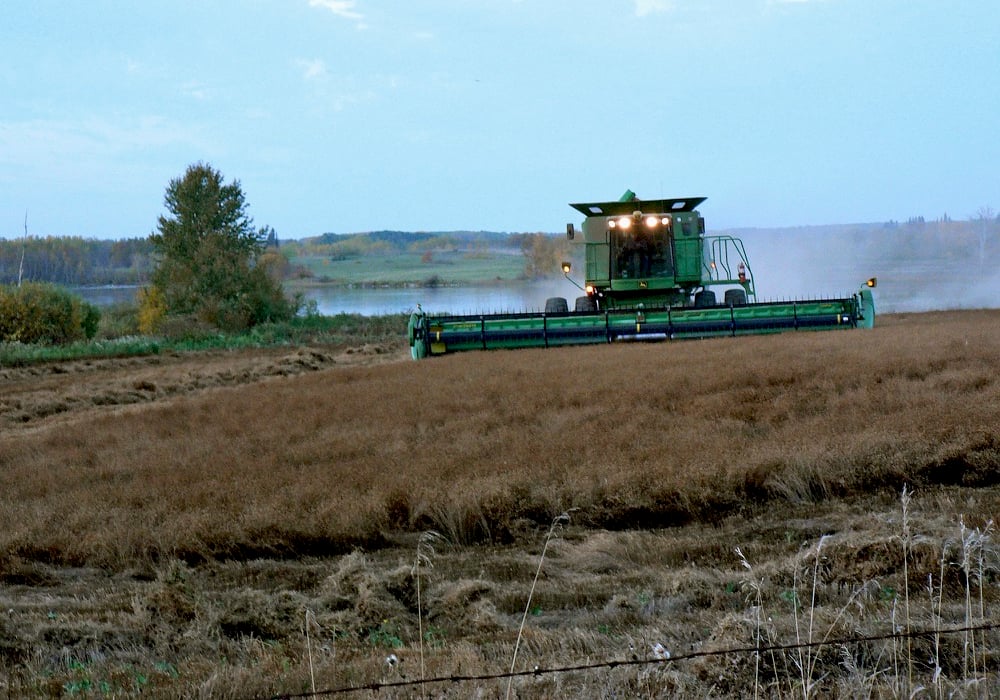Ontario farmers who contravene or fail to comply with new seed treatment regulations could face “very significant fines” up to $20,000, says a provincial spokesperson.
The government of Ontario released regulations today to govern the use of corn and soybean seeds coated with neonicotinoids, the most popular class of insecticides in the world.
Neonicotinoids, commonly known as neonics, are applied to almost all of the corn and canola seeds in North America and a portion of soybean seeds. The insecticides have been blamed for bee colony and pollinator losses in the United States, Canada and Europe.
Read Also

Most of Manitoba harvest wraps up for 2025
Manitoba Agriculture issued its final crop report of 2025, showing the overall provincewide harvest at 97 per cent complete as of Oct. 20. Nearly all major crops have finished combining, with 37 per cent of Manitoba’s sunflowers finished, plus 71 per cent of grain corn and small amounts of soybeans and potatoes left to do.
The province said the regulations would protect pollinators because the new rules will hopefully cut the use of neonics on corn and soybeans by 80 percent by 2017.
Ontario government staff shared technical details of the regulations in a media briefing this afternoon.
Steve Klose, director of the provincial environment ministry’s standards development branch, said seed dealers and farmers who ignore or violate the regulations could face stiff financial penalties.
“They are potentially very significant, in terms of the maximum numbers,” he said during a media teleconference call. “It is up to (a) $20,000 fine. The ministry does have a judgment matrix that we use, in terms of making decisions about potential prosecutions and more importantly, non-compliance.”
The new regulations will officially take effect July 1 and be phased in over the next two years. In 2016, farmers can use neonic treated seed on 50 percent of their acres. In 2017, Ontario farmers will have to prove that they have pests in their fields before they can purchase and use a neonic.
Growers must complete a pest assessment report and submit it to a seed dealer. For example, the report must show:
* That a field has an average of two grubs, over five scouting locations.
* That a field has an average of one wireworm over five scouting locations or pests have caused at least a 15 percent plant stand loss in corn or a 30 percent plant stand loss in soybeans.
Klose said growers could buy corn and soybean seed in Quebec, but that won’t allow farmers to evade the regulation.

“There is nothing specifically in the regulation that restricts them from purchasing their seed elsewhere,” he said.
“When they use them … in Ontario, they are subject to the act and regulations. They will have to (submit) a pest assessment report.”
Grain Farmers of Ontario and other farm groups strongly oppose the regulations. They have described the rules as “unworkable” and say the policy has been driven by “politics and special interest groups.”
GFO members demonstrated outside Ontario MPP offices in late May to express their frustration with the government’s seed treatment policies.
Many farmers have said the government’s two year timeline to fully implement the regulations is ridiculous, given the widespread use of the products.
Klose said the tight timeline is necessary because neonics are threatening the health of bees and putting the province’s environment at risk.
“The direct linkage between the planting of neonicotinoid treated seed and acute honeybee deaths…. We are (also) seeing neonicotinoids showing up in the aquatic environment.”
The restrictions on neonics are part of a broader policy for bees. The province of Ontario is developing a Pollinator Health Action Plan, which will identify solutions for:
* pollinator habitat and nutrition.
* pesticide exposure
* disease, pests and genetics
* climate change and weather
The government will hold a public forum later this year to discuss its pollinator plan.
Contact robert.arnason@producer.com















